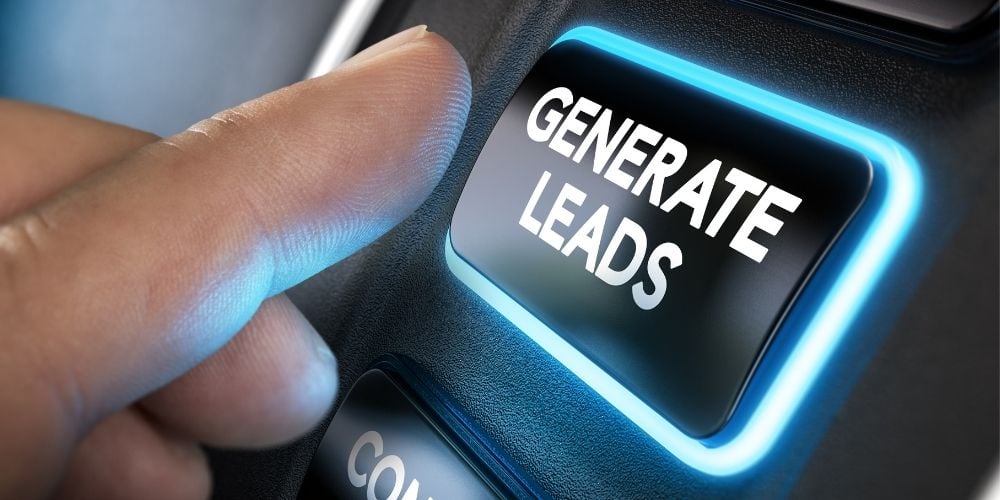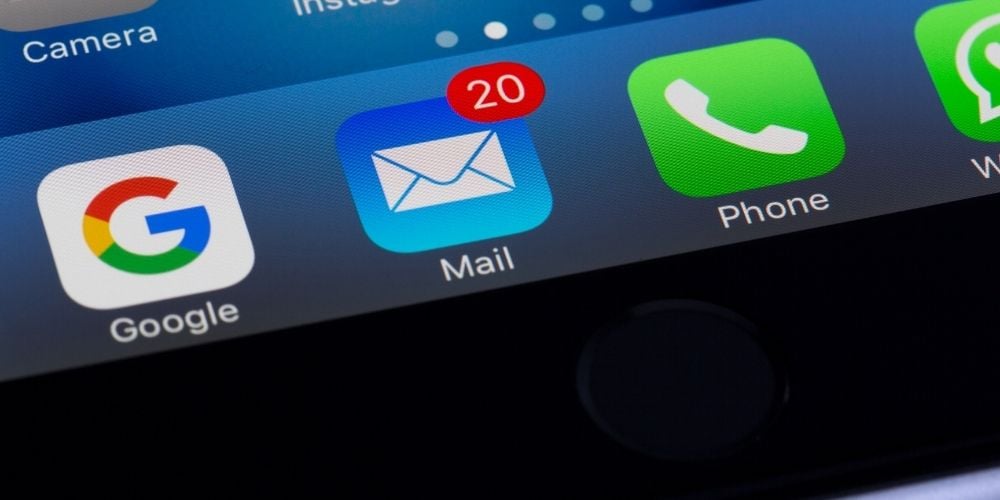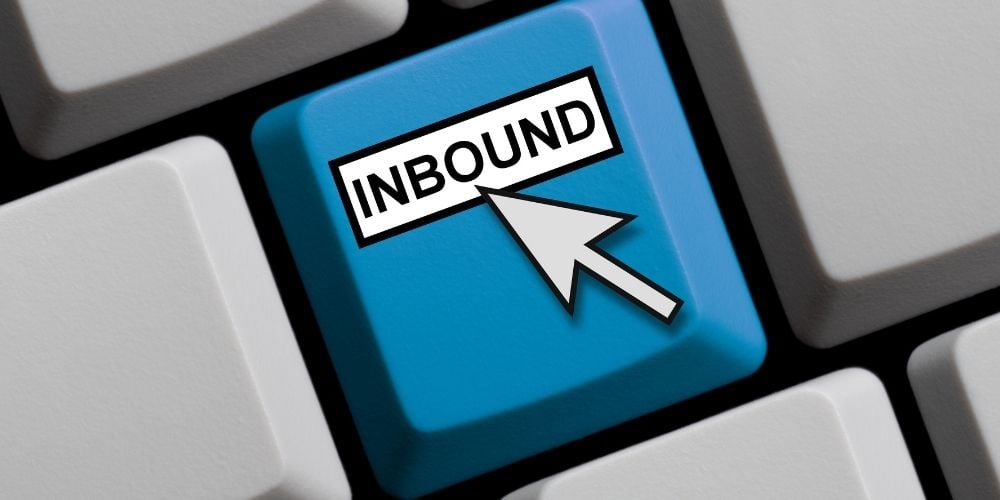32 B2B Lead Generation Strategies
Table of Contents
A Guide To 32 B2B Lead Generation Strategies You Can Implement Today.
Discover the most important B2B lead generation strategies to consider.
Find out how what best practices to follow for B2B lead generation success.
Create a fully integrated digital lead generation action plan to focus on your growth.
32 B2B Lead Generation Strategies
A well-managed B2B lead gen campaign will deliver unparalleled results to your business. It will be the difference between the odd lead drifting to your site every couple of weeks, and a consistent stream of marketing-qualified leads progressing along a smoothly-implemented funnel toward making a purchase.
Just considered these stats:
- 62% of B2B buyers use only digital content to inform purchase selections (source). This means you must have a well-polished, strategic digital B2B lead gen plan.
- 86% of B2B companies maintain a blog (source). That’s a lot of competition, but also a lot of places to draw inspiration.
- Only 45% of B2B companies claimed to have a specific marketing plan in 2017 (source). If this is correct, then having a plan puts you in a better position than almost half of B2B companies.
The strategies on this page are exactly what B2B businesses need to build an effective B2B lead generation plan. This plan will ensure an influx of marketing-qualified leads, who will be guided along a smooth marketing funnel that addresses all their concerns on the way to making a purchase.
But first, let's look at definitions.
What is B2B Lead Generation?
B2B lead generation is the means through which a business attracts potential future customers, through deliberate and concerted marketing efforts. Prospective leads are identified, contacted, and qualified, with the end goal of converting them into customers.
The process consists of the following stages:
Find leads
You can find leads through active or passive marketing efforts. The goal is to attract prospective customers with challenges that can be resolved by your product or service.
Effective ways to find leads include marketing, advertising, networking, trials, and more. Passive methods include referrals, recommendations, and similar.
Contact leads
Once you identify a lead, the next step is building a relationship. The preferred method of communication varies depending on the interaction that has taken place. For example, if someone leaves their name and email in exchange for an ebook, you could contact them with an email sequence to usher them further along their user journey.
If somebody has actively expressed interest in your service via a free trial, you could phone them to discuss upgrading to a subscription at the end of their trial.
Qualify leads
Qualifying leads comes down to evaluating their level of engagement. In the examples above, the person receiving an email sequence is a marketing-qualified lead (MQL): They’ve expressed willingness to engage with your company, but haven’t yet expressed interest in sales-based communication.
Once a lead expresses their interest in becoming a paying customer, they become sales-qualified leads (SQLs) or product-qualified leads (PQLs) depending on whether you offer services or products.
You can then tailor future communication according to these categories.
Close deals
Once leads are identified and cultivated with relevant, targeted marketing communications, the goal is for them to make a purchase.
By formalising your B2B lead generation process, you maximise the likelihood of a lead progressing along the journey outlined above. A well-designed, well-implemented inbound marketing strategy sits at the heart of B2B lead generation.
What is Inbound Marketing?
Inbound marketing is the creation of marketing content designed to address and solve the specific challenges experienced by your prospective customers. The idea is to attract prospects to this content by providing real value, rather than interrupting them with marketing content that is irrelevant or unwanted.
By attracting rather than interrupting, and by providing real value, inbound marketing aims to foster goodwill and nurture mutually beneficial marketing relationships. Customers who arrive and convert through inbound marketing campaigns often have a better understanding of your business and the solutions it offers to their challenges; this often leads to healthier and stronger ongoing communications.
B2B Lead Generation Best Practices
B2B lead generation is the specific practice of attracting and identifying leads in the B2B - or business to business - channel. B2B leads are businesses facing challenges to which your product or service can provide a solution.
The core objectives of B2B lead generation are the same as those of lead generation in general -
- Find leads: Businesses facing challenges that you can solve.
- Contact leads: Initiate contact on relevant terms.
- Qualify leads: Categorise leads based on the challenges they face and their level of engagement.
- Close deals: Solve their challenge by selling them your product or service.
Following best practice with B2B lead generation leads to a more organised and effective campaign. Best practice includes things like -
- Defining your audience. Successful marketing uses a clearly defined audience rather than a scattergun approach. Content tailored to needs and challenges performs better than guesswork.
- High-quality content. Investing time and effort into quality content - whatever the medium - will yield better results than low-quality pieces.
- Strategic content. Content created within an overarching strategy will have a higher success rate than that created on a whim.
- Effective CTAs. Attracting prospects to content is good, but guiding them further along their buyer journey with effective CTAs is vital. Otherwise, they’ll likely go elsewhere.
- Collect the right info. Certain pieces of information are required to qualify a lead, but you don’t need to go overboard. Trust is built by only requesting the information you really need, and using each piece well.
Following best practices maximises the likelihood of a streamlined lead generation process, where prospective leads are guided smoothly along their buyer journey. A challenge is identified, then content is served which articulates the challenge and offers potential solutions your business can offer. Effective marketing communication ushers the lead further along the funnel until they eventually make an informed and suitable purchase.

The 32 Best B2B Lead Generation Tactics and Strategies
There are many effective tactics and strategies for B2B lead generation.
This section introduces 32 of the best, along with a brief explanation of how and why they are effective.
1. Think BIG
How it helps with B2B lead gen: Lets you attract the prospective customers you deserve.
Viewing your entire B2B lead generation campaign as a series of interconnected ecosystems, rather than individual systems, increases the likelihood of success.
The overarching goal of B2B lead generation is to attract, nurture, and convert prospects into paying customers through concerted marketing efforts. Each step of this journey relies on those before and/or after it, so planning and implementing each stage alongside the others is vital.
When designing your B2B lead generation strategy, make sure to involve people from all relevant teams and departments. Invite input from all areas to ensure that the challenges and skills from each are addressed and leveraged respectively.
2. Think SMALL
How it helps with B2B lead gen: Ensures nothing gets overlooked.
It’s also important to focus on the more granular aspects of your B2B inbound marketing strategy. This includes things like the phrasing of CTAs, the formatting of marketing content, and the design of data-capture forms.
In the grand scheme of things such points may not feel particularly important but taken together, the impact is real and noticeable. It’s like Sir David Brailsford’s ‘Marginal Gains’ philosophy that brought victory to the UK cycling team: Identify improvements that can be made at every step of the process, no matter how small, and the cumulative impact will be huge.
3. Don’t try to do everything at once
How it helps with B2B lead gen: Lets you give the required attention to each task.
We’re about to introduce a lot of tactics, and we’ll say this from the outset: Attempting to do all of them at once may not be the wisest option.
Allocating resource toward each tactic and doing it well will yield far better results than spreading yourself thin by trying to do everything at once.
One way to ensure effective resource allocation and optimal achievement of your B2B marketing goals is to involve a specialist agency.
4. Demonstrate your credentials
How it helps with B2B lead gen: Shows prospective customers that you are credible.
Part of a prospect’s decision to commit to a purchase is the confidence that the solution will resolve the problem at hand. Demonstrating the credibility and credentials of your organisation plays into this, and displaying the right ones on your site is a strong trust signal. This includes -
Testimonials
Real feedback from previous customers whose challenges have been solved carries a lot of weight. When prospects read through responses from people in similar positions facing similar challenges, their confidence will grow.
Payment logos
Knowing that any purchase made will be safe and secure is a key trust signal when buying online, both in the B2C and B2B arenas. Prospective clients want to know that their money is safe throughout the purchase.
Memberships
If you’re a member of any industry organisations or professional bodies, flaunt this. Prospects will be reassured by these credentials, as they demonstrate the legitimacy of your business.
Awards
In the same vein, if you’ve won industry awards for your business, your products, or your services, make sure to display these publicly. They serve as great trust signals in boosting your credibility.
5. Technical SEO
How it helps with B2B lead gen: Ensures prospective customers have a smooth web experience.
In some ways, this tactic is the bedrock on top of which everything else is built. A site that does not perform well from a technical perspective will suffer disproportionately in terms of ranking and engagement, even if the marketing content is well-implemented.
There are plenty of tools available to check the technical configuration of a website. Screaming Frog and Google’s Lighthouse tool are two good examples. Investing time here will ensure that any prospective leads visiting your site have a smooth experience and won’t be driven away by technical issues.
6. Build a firm understanding of search intent
How it helps with B2B lead gen: Ensures you’re providing real value to prospects.
Inbound marketing success relies on understanding what people in your space are searching for, and which questions / concerns they want to be addressed.
Satisfying search intent is a cornerstone of effective B2B lead generation. By creating content that acknowledges and resolves real issues being encountered by your audience at every step of their buyer journey, you facilitate their movement toward purchase.
Here are three ways to establish the conscious and subconscious search intent for the buyer journeys that lead to your products and services -
- Look at the SERPs to see what questions existing content answers. Also, look for any gaps that aren’t addressed.
- Explore keyword data in AHRefs, Google Ad Planner, and other keyword tools. Spend time investigating the context terms appear in, particularly where these are question-based.
- Speak with people in your sector. Conduct surveys with existing and former customers to determine gaps in their knowledge, and what questions they need answering.
7. Build a firm understanding of keywords in your space
How it helps with B2B lead gen: Ensures you’re attracting the right prospects from the right places.
Keywords are a cornerstone of online marketing. They give insight into how people search, the intent behind a search, and the expected and desired outcomes of searches.
All search engines use keywords in search queries to determine which content to serve in their results pages. Even with constantly evolving and ever-more sophisticated search algorithms, keywords are still at the heart.
It’s important to understand the keywords in your space so that you can tailor content accordingly. Doing so allows you to provide real value to people using your site, and increases the chance of ranking for more queries.
There are several types of keywords:
- Exact match: A word or short phrase directly attached to a commercial outcome. “Buy office supplies”, for example.
- Short-tail: A query of one to three words that broadly captures a concept but does not necessarily specify granular search intent. “Printer ink”, for example.
- Long-tail: A longer query that clearly communicates granular intent. “Buy cyan ink cartridge for HP printer”, for example.
- LSI keywords: LSI stands for ‘latent semantic indexing’ and refers to keywords that provide context. The word ‘printer’ on a page about ink is an LSI keyword that establishes the context and differentiates it from pages about squid, pens, or tie-dying.

8. Be mobile-friendly
How it helps with B2B lead gen: Allows prospects to browse smoothly on any device.
A mobile-friendly web experience is vital since the introduction of mobile-first indexing. Search engines now prioritise content that is tailored to mobile, and you will be penalised if your site falls behind.
The majority of search traffic now comes from mobile, so even if most of your BCB clients visit and buy from desktops, you still need to have a responsive site.
9. Create a strategic content schedule
How it helps with B2B lead gen: Coordinates all inbound content efforts around core objectives.
It’s vital to create content that serves a purpose. This means it addresses real search intent, provides value, and helps to guide prospective customers along the buyer journey.
Content is more effective when it is strategic and implemented as part of an overarching strategy. B2B lead generation relies on high-quality content, and you’ll be rewarded if you think beyond blog posts.
Webinars, ebooks, resources, videos, podcasts, white-papers and so on can all be put to great effect. We’ve written more about this in our content marketing strategy page.
10. Post content elsewhere, too
How it helps with B2B lead gen: Keeps you visible in the places where prospects spend time online.
Inbound marketing can involve posting content on external sites with the goal of delivering value to, and attracting traffic from a different, tailored audience. By attracting engagement from other audiences you expand the reach of your marketing efforts.
It’s important to prioritise high-quality opportunities rather than posting for the sake of it. A well-written opinion piece in an industry publication, for example, will achieve much more than a spun content guest post fired off to a site no one ever looks at.
11. Refresh old content
How it helps with B2B lead gen: Keeps you relevant and ensures ongoing provision of value.
Leaving existing content to gather dust isn’t helpful. For optimum results, old content should be revisited occasionally to ensure it still serves a purpose. You can either leave it as it is, repurpose aspects of it in new content, or remove it. There’s no harm in removing old content that doesn’t serve any purpose, especially where it will be replaced with newer, more effective content.
12. Make sure all content is live
How it helps with B2B lead gen: Contributes to a smooth web experience and avoids drop-offs.
As part of ongoing content management, you need to make sure no 404 pages appear on your site when old content is removed. Redirects are useful for keeping all potential user journeys through your site intact and carry technical SEO benefits as well.
13. Build topic clusters
How it helps with B2B lead gen: Organises content in a logical and intuitive way.
A smooth user journey is vital. Prospects need to find the content that will help resolve their queries as soon as possible, and navigation between different pieces needs to be logical and intuitive.
Topic clusters are a modern content management structure consisting of -
- Pillar pages: Long-form resources giving top-level introductions to broad subjects.
- Cluster content: Shorter content pieces giving in-depth explanations of specific concepts.
The idea is to facilitate user journeys that satisfy all search intent, from broad to granular, and to direct prospective clients to relevant CTAs and pages with commercial intent.
14. Internal linking
How it helps with B2B lead gen: Facilitates easy navigation between content on your site.
It’s important to link your content together to create a coherent ecosystem. Topic clusters lend themselves well to internal linking: Link from pillar pages to cluster content, between pillar pages, and from the top nav to pillar pages.
When used correctly, internal links act as useful signals for search engines and intuitive navigation for humans. An intuitive site to use is more likely to retain visitors’ interest and turn them into leads.
15. Strategic CTAs
How it helps with B2B lead gen: Directs prospects to relevant and targeted commercial outcomes.
When someone arrives at your website, they’re looking to satisfy some sort of search intent. Perhaps they want a question answered, or some guidance on how to achieve a certain business outcome. Fulfilling this intent is the primary job of your marketing copy, but guiding visitors toward commercial outcomes is just as important. Calls-to-action (or CTAs) are the way to achieve this.
Directing visitors toward the most relevant marketing outcomes for their needs involves arranging calls to answer questions about products, requesting demos to trial services, and so on.
CTAs help you to avoid people arriving at your site and leaving because they can’t find the next logical step in their buyer journey. Dedicated landing pages with tailored CTAs are necessary to filter traffic from each source.
16. Grab attention
How it helps with B2B lead gen: Encourages commercial engagement where prospects may otherwise have dropped off.
Used well, pop-ups and similar can prompt users to engage with CTAs on their way out of a website. This can range from newsletter pop-ups after a certain time has passed on a page, to pop-ups that appear when the mouse is moved toward the top of the page to switch tab or - god forbid - close their browser.
It’s a careful balance to tread because many web users are fatigued by the number of interruptions and demands on their attention. Using pop-ups selectively and in relevant places can be useful in capturing leads who may otherwise have abandoned your site, however

17. Social media
How it helps with B2B lead gen: Broadens your brand reach and attracts prospects from a wider pool.
Often considered less important in a B2B context, social media does still have a role to play. Most obviously, you can promote your content. However, social media channels that are conversational - not advertorial - often see more success.
And here’s why.
People looking to make a purchase in the B2B channel look at the people attached to companies. If you’re subscribing to SEO software, you’ll probably follow the individual accounts of big SEO names who work there. Social media is an incredibly powerful vehicle for the thought leadership that attracts attention from prospective customers: The more thought-provoking your content, and the more you engage in conversation around it, the more likely you are to bring prospects toward your business.
18. LinkedIn
How it helps with B2B lead gen: Ensures visibility and engagement in a key B2B channel.
LinkedIn is perhaps the best-positioned social media channel for delivering success in the B2B arena. For instance: Lead generation from LinkedIn was successful for 65% of B2B companies. That is huge.
For B2B marketing it makes a lot of sense to be visible on the main social network for business decision-makers. Networking has always been a powerful part of B2B marketing, and LinkedIn is the modern implementation of this.
Plug LinkedIn to a powerful marketing software like HubSpot, and you turbocharge what you can achieve on the platform. Detailed reports will identify opportunities and track your LinkedIn B2B marketing efforts and results.
19. Email marketing
How it helps with B2B lead gen: Allows intelligent and bespoke communication tailored to individual prospects.
A lot of people ask whether email marketing is inbound or outbound marketing. After all: You’re sending emails outward from your organisation.
The widely-accepted answer to this question is, email marketing is outbound but with an inbound goal. You’re trying to capture people’s interest and lure them from their inbox to your website.
When designed properly, email marketing is incredibly powerful. Email chains built on conditional logic that provides specific content and CTAs based on an individual’s demographic and commercial information can generate way more sales than the random scattergun approach that spammers take.
20. Email templates
How it helps with B2B lead gen: Preserves resource when curating multiple email campaigns.
Effective B2B email marketing relies on sending a lot of emails but making sure each one is useful and not unwelcome. Investing time and energy designing templates that work, and which sit aesthetically within your brand is a core part of this. It creates a seamless and familiar experience for the person receiving it, and won’t put them off.
A/B testing is a great method for finding the most effective template. Then, when you’ve found one that works, you can reuse it and continue to monitor results, making tweaks where necessary.
21. Automation
How it helps with B2B lead gen: Further preserves resource, especially for simple recurring tasks.
Automation frees up internal resource at the early stages of email marketing campaigns, letting you focus more human power on the later stages.
Personalised, automated emails, when well designed, can attract interest from prospective B2B clients. Then, when CTAs in the emails drive them toward your site, a human can take over and get them on their way to making a purchase.
22. Personalisation of subject lines
How it helps with B2B lead gen: Draws in prospects by making them feel special.
There’s a lot of competition for your attention online, and most people decide whether or not to read an email based on the subject line. Grabbing attention by using their name is one way to boost engagement, although be aware it can be overused.
If a B2B prospect gives their name and contact details in exchange for marketing collateral, or to arrange a follow-up call or similar, using their name is a nice way to keep the cordial conversation going. Probably best to avoid sticking it in the subject line of every email they ever receive from your business, though.
23. Personalisation of content
How it helps with B2B lead gen: Makes prospects feel even more valued.
It’s important to curate user journeys so that prospects feel valued as individuals, and that their specific concerns are being addressed, as opposed to feeling like another generic marketing statistic.
In the same way that personalising subject lines attracts interest, personalising email body content builds on this feeling. Prospects feel valued and are more likely to engage with ongoing B2B marketing efforts.
HubSpot offers an incredible range of personalisation options through their Smart Content functionality.
24. Email tracking
How it helps with B2B lead gen: Gives insights to underpin refinements to ongoing campaigns.
Strategic email campaigns are far more effective than the ‘fire and forget’ methodology, especially in B2B marketing. It’s likely that emails will be read by various people in the organisation, or at least have their content shared as part of the decision-making process, so they need to be effective.
Tracking engagement and actions taken by people reading your email allows you to curate their ongoing buyer journey. It lets you follow up with the right content at the right time, increasing the likelihood of progression along the funnel. And, most importantly, it highlights areas in the email marketing funnel where improvements and refinements can be made to boost the success of future claims.

25. Email sequences
How it helps with B2B lead gen: Sculpts prospects’ actions by presenting them with tailored opportunities.
Sequences are automated email workflows initiated by specific actions. If someone swaps details for an ebook download, for example, they’ll probably be entered into an accompanying workflow to guide them toward a marketing outcome like a free trial, or product demo.
If someone takes an action during the sequence, tracking cookies highlight this and alter the content they receive next. By investing time and effort setting up logical email sequences, you can present prospective customers with incredibly sophisticated marketing communications that fulfil their needs while guiding them toward conversions, all while not being overwhelming or annoying.
26. GDPR compliance
How it helps with B2B lead gen: Prevents you from inadvertently violating privacy law.
This isn’t a lead generation strategy, as such, but it’s a vital part of any strategies relying on data. The General Data Protection Regulation came into force in May 2018 and governs how data collected online can be used. Make sure your organisation and its marketing efforts are compliant, otherwise you could get into hot water.
HubSpot took action to ensure the compliance of their platform.
27. Live chat
How it helps with B2B lead gen: Connects prospects immediately with the content they need.
Live chat is a great way to guide visitors to your site toward the content they need, whether that be informational or transactional. The first steps of a conversation (figuring out topics, preliminary suggestions) can be automated, and the better crafted a script, the more useful this is likely to be. At a certain point, automation will fall short, and human agents can be tagged in to help the person with their query.
In the B2B marketing arena, live chat is a way you can help prospective customers to find the content that articulates the challenges they’re facing, and which highlights potential solutions offered by your organisation.
28. Carefully crafted support pages
How it helps with B2B lead gen: Resolves prospects’ issues speedily before they go elsewhere.
We’ve said it before, but satisfying search intent is a core aspect of inbound marketing. It has a role to play in B2B lead gen, as well.
When a prospective lead arrives at your site, you want to ensure they find the information they need. If this is an answer to a question they have about your product, this must be quick and easy to find. Otherwise, they’ll look for a while, and head elsewhere.
29. Contact management
How it helps with B2B lead gen: Keeps prospect information up to date.
Systemise your data storage so that each contact is up to date. Then you can see their information at a glance, along with their location in the funnel, and with the actions they’ve taken and the contact they’ve received.
The HubSpot CRM allows you to track this, along with internal metrics to indicate which team members’ outreach is most effective. This highlights issues and allows improvements to be made throughout the process.
30. Effective information acquisition
How it helps with B2B lead gen: Avoids overwhelming prospects by asking for too much info.
When it comes to collecting data about prospective customers, only ask for what you need. Forms with thousands of fields that demand every piece of information about a person - most of it irrelevant - serve to do just one thing: Drive people away.
Only get the info you need at each step of the interaction, then use each piece to streamline individual user journeys with the lead generation tactics mentioned above.
31. Paid ads
How it helps with B2B lead gen: Supports organic marketing efforts and broadens visibility.
Paid ads used to be considered outbound, but done properly, they can attract people from relevant searches where your business doesn’t rank organically.
A carefully-crafted landing page tailored toward the specific search intent of each search where you pay to appear can provide real value for prospective B2B customers.
32. Keep things organised in-house
How it helps with B2B lead gen: Prevents ineffective resource management and alignment around core business objectives.
Keeping everything organised ensures effective implementation of your B2B lead generation so that all data is utilised and no effort is wasted. Once you’ve got data, use it. Once you’ve sent outreach or published content, maintain awareness of how it’s performing. This organisation lays the groundwork for more effective marketing in the future.
How to Succeed at B2B Lead Generation
To reiterate, the goals of lead generation are simple: Find leads, contact them to build a relationship, qualify them based on their needs, and close deals. In a B2B context, this is the same, except you’re dealing with businesses rather than individuals. There are more people involved in the decision-making process, and the products and services on offer are of a different nature, but the overarching process is the same.
There are tons of tactics that can make up a B2B lead generation campaign. The specific tactics you use, and in which combination, depends on the business implementing the campaign, the types of prospective client businesses, and the business objectives at both ends.
One thing is true whatever your B2B lead gen campaign looks like, however: The more effort and resource you invest, and the better the strategy that underpins everything, the better the results. Monitoring and refining each step of the campaign is a vital part of this process.
At DMS we have demonstrable experience in revolutionising B2B marketing campaigns. To find out how we can help your B2B marketing campaigns, get in touch today!


